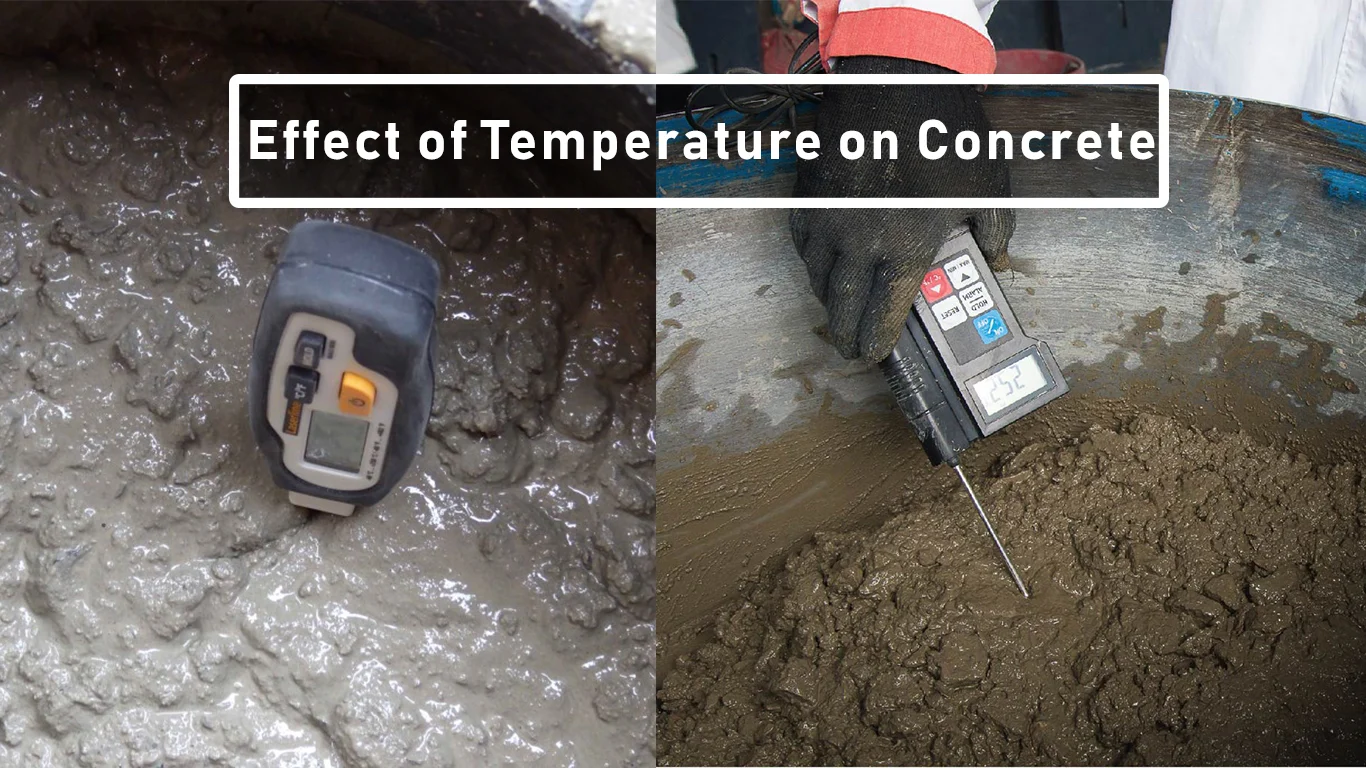Effect of Temperature on Concrete

Effect of Temperature on Concrete
Similar to other materials, cone expands with increase in temperature and contract with decrease in temperature. The range of variation in temperature varies from localities to localities, season to season and day to day.
The objectionable cracks may occur in cone due to contraction combined with the effect of shrinkage.
Occasional y large and harmful stress may develop due to deformation because temperature changes.
The coefficient of thermal expansion of contraction depends on the type and quantity of cement, aggregate, relative humidity and sizes of section.
Concrete at high temperature:
In some industrial application such as aluminum plants and brick works the cone may be occasionally or frequently subjected to temperatures. These temperatures are likely to be applied linearly.
General y with and rather a long period.
Similarly jet aircraft and vertical take aircraft may subject the payment to very high temperature.
Heat may affect concrete and as a result of,
The removal of evaporable water.
The removal of combined water.
Alteration of cement paste.
Disruption (of beam) from disparity of expansion and resulting thermal stresses.
Alteration of aggregate.
Change of the bond bet aggregate and paste.
Other effects on cone due to temperature.
Cycles of temperature can have a progressive effect on the reduction of strength even longer curing did not improve the loss.
Tensile strength of cone is more effect by heat than its com strength.
During rapid rise and fall of temperature the response of cone is affected by the interaction of thermal expansion, drying thermal incompatibility and enhanced every at high temperature.
If the heating is sufficiently rapid, high stresses can be included; hence failure and instability may result.
Effects of steel at high temperature:
The influence of temperature on steel appears as a change in yield stress, ultimate strength and modules of elasticity.
The changes depend on the type of steel and are greater in cold-weathered steel.
The strength of hotroled steel bars are not reduced if the temperature does not reach to 300° C. But at temperature of 500-600°C the yield stress is reduced to the order of the working stress and the elastic modules is reduced by one-third.
Bars heated to this temperature virtual y recover their normal temperature.
Bars heated to 800 o C have a lower residual strength after cooling to room temperature.
Pre-stressing wire and stand starts to lose strength at 150° C and may have only 50% of its room temperature strength when heated to about 400° C.
The below fig shows the summery of,
Behavior of fire:
Failure in a fire occurs either through the spread of fire from the compartment or through structural failure of a member or assembly of members.
Structural failure of a member most frequently occurs when the temperature of the steel reduces the yield stress to the working stress. The length of time of this fire occurs depend upon the severity of fire, the thermal conductivity of the protecting concrete and weather spalling of the protection covers.
Read More Aerated Foam Concrete








